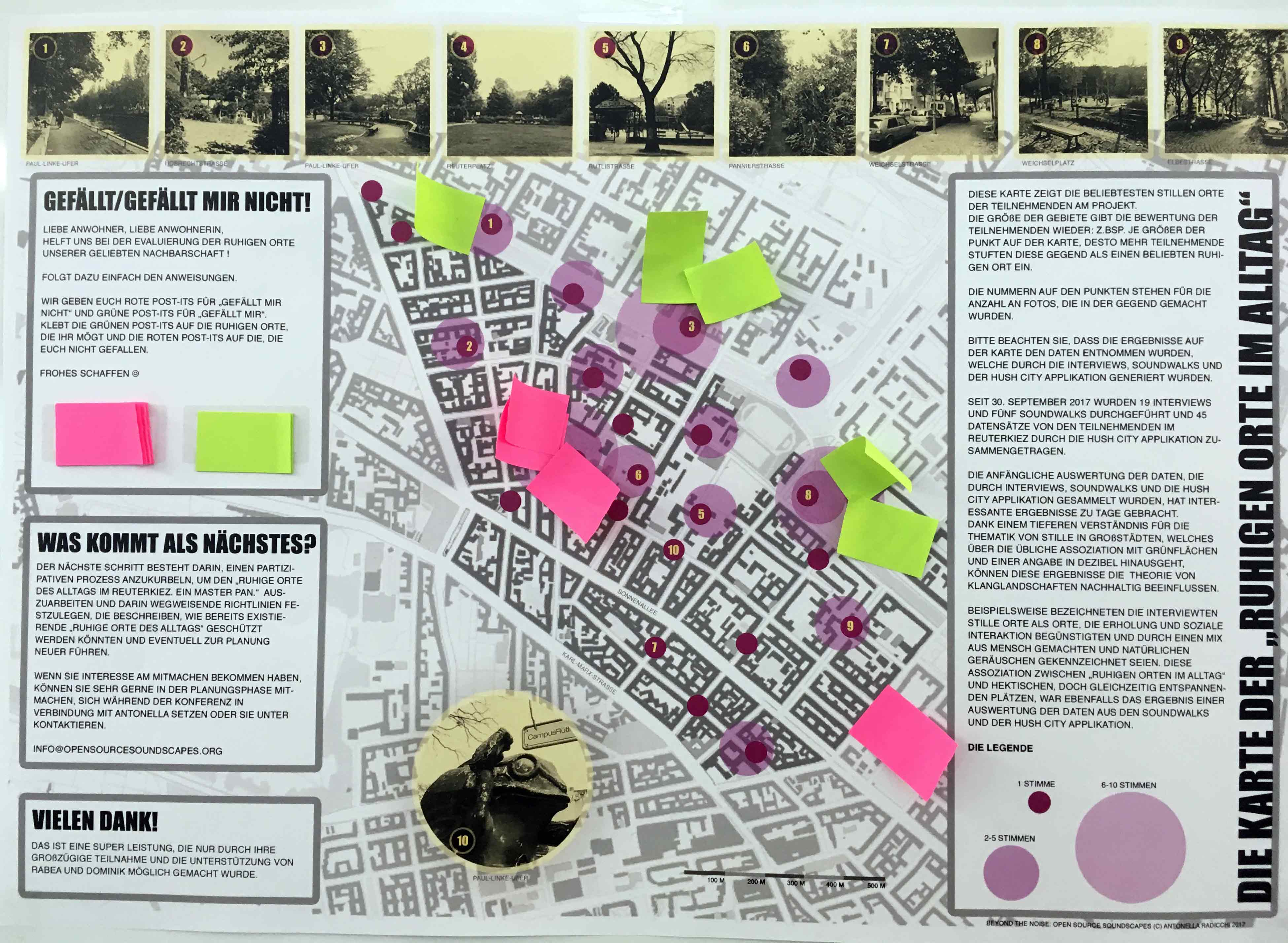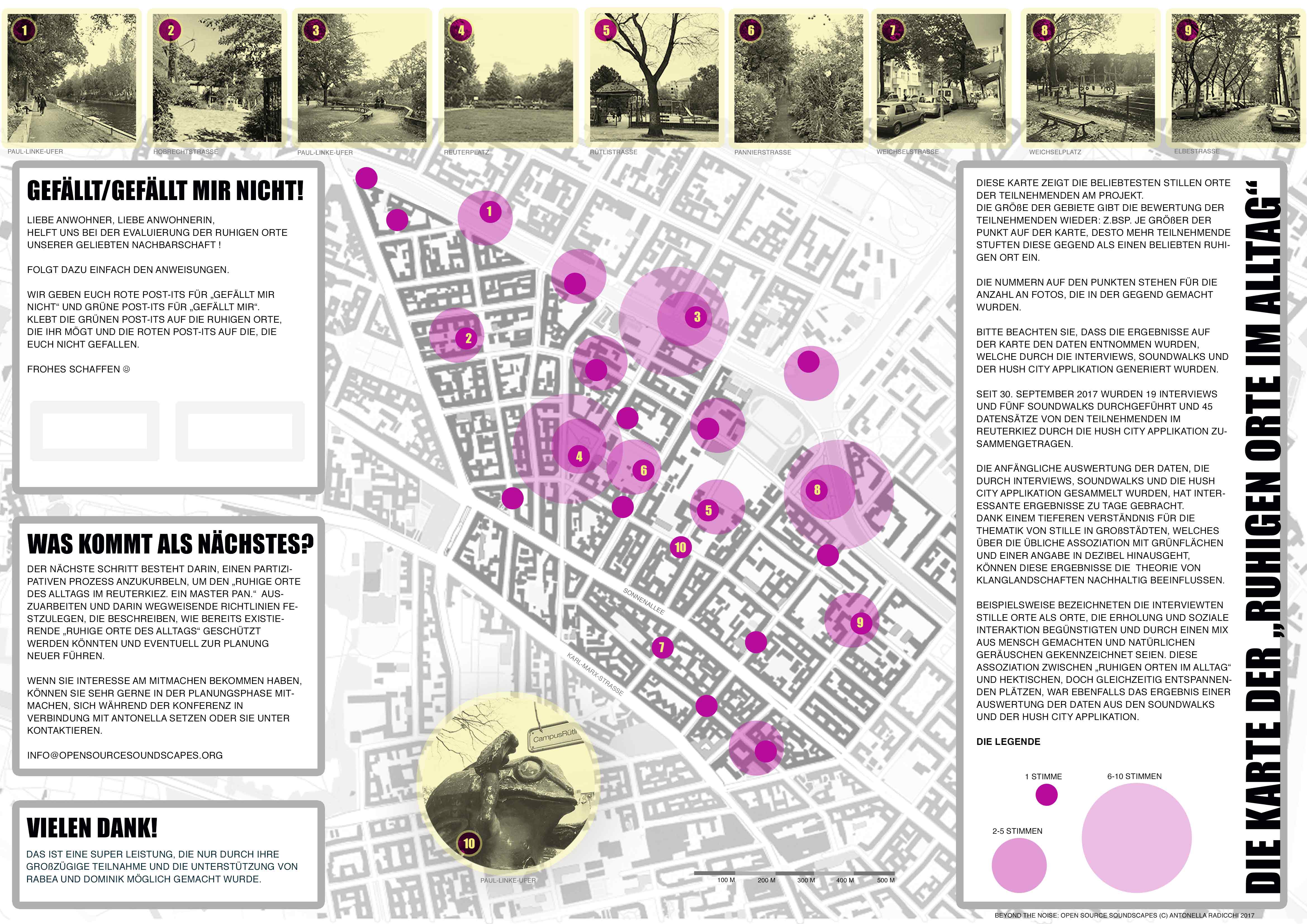On October 14, the Reuterkiez Stadtteil-Tagung took place and we had a wonderful day of exchanging and debating about the neighborhood. It was also a great opportunity to meet new people and imagine together a quieter future!
Thank you so much to the Stadtteilbüro Reuterkiez for having made this event possible and so special, and, of course, thank you to all those who participated with their energy, passion and dedication.
On that day, I had the privilege to set up a corner dedicated to “Beyond the Noise: Open Source Soundscapes” project, thanks to Rabea and Dominik from the Stadtteilbüro Reuterkiez who encouraged me to do it.
By means of visual tools, I described the project’s rationale, its goals and methods and I presented the project’s first results through a colourful and interactive map: the Reuterkiez “Everyday Quiet Areas Map”.
The “Everyday Quiet Areas” Map
This maps shows the favorite “everyday quiet areas” identified by the participants in the project.
The size of areas relates to the rating given by the participants: e.g. the bigger is the dot, the bigger is the number of participants who indicated that area as their favourite quiet area. The numbers displayed on the dots refer to the pictures of the areas framing the top of the map.
The results displayed on this map come from the overall data collection, which took place between May and September 2017 in the Reuterkiez in Berlin, by means of interviews, soundwalks, and by using the Hush City app. As of September, 30 2017: 19 interviews were made, 5 soundwalks were performed, 45 datasets were collected by participants in the Reuterkiez, by using the Hush City app.
The initial evaluation of data collected through interviews, soundwalks, and the Hush City app, has yielded interesting results. Data evaluation led to a more complex understanding of the notion of quietness in cities, beyond the common definition based on sound levels. For example, in the interviews, people have referred to quiet areas as places, which favor relaxation and social interaction, and are characterized by a mix of natural and human sounds. This association between “everyday quiet areas”, expected on the local scale, and lively, yet relaxing places, resulted also from a cross evaluation of data collected through the soundwalks and the Hush City app. You can read a bit more about the project, its first results and future challenges here.
Like or Unlike it!
During the day, people were invited to evaluate the “everyday quiet areas” identified by the participants in the project, by playing a simple interactive game: the LIKE OR UNLIKE IT! game. A number of red post-its for UNLIKE and green post-its for LIKE were provided and people were invited to place green post-its on the quiet areas they liked, and the red post-its on those quiet areas they did not like. The results can be seen hereafter!

Picture illustrating the results of the interactive game played with people to evaluate the “everyday quiet areas” identified by the participants in the “Beyond the Noise: Open Source Soundscapes” project. (C) Antonella Radicchi 2017
What’s next?
These initial results can be said to be advancing soundscape theory and they can be applied in city planning.
But, how?
Keep on following us if you are interested in learning more about the integrated planning process we aim to achieve. The next step indeed consists of establishing a participatory process to draft the “Reuterkiez Everyday Quiet Area Master Plan” and to define planning guidelines on how to preserve and improve the existing “everyday quiet areas” and, eventually, planning new ones.
If you would like to join us and participate in the planning phase, please get in touch by dropping a message at antonella.radicchi@tu-berlin.de.
Thank you for your interest!
